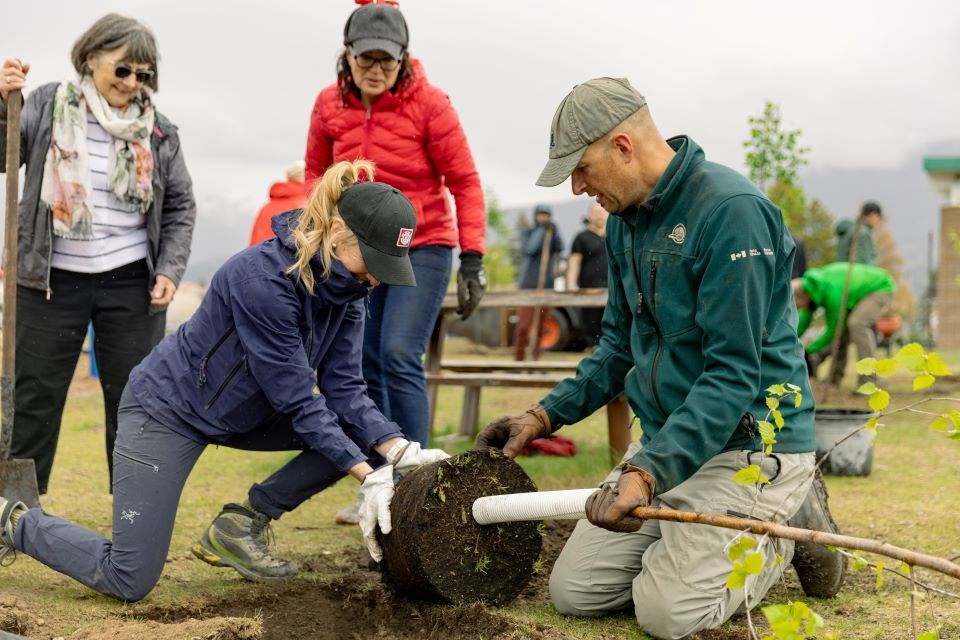Parks Canada’s new program to help deal with the problem of fruit trees attracting bears into the townsite has been a success.
The Fruit Tree Replacement Program was announced in March as another measure to encourage residents and business people to reconsider their part in the equation of human-wildlife encounters.
All of the 310 trees that were brought in this year have now been allocated, said resource conservation manager Dave Argument in Jasper National Park.
“The uptake on the program was fantastic,” he said.
The incentive for those participating in the program was essentially to trade a fruit tree for a non-fruit tree. Parks Canada offered six species of trees including native trembling aspen, paper birch, non–fruit-bearing columnar aspen, spring snow flowering crabapple, Amur maple or silver maple. They came from a nursery at a viable 1.83 metres in height and 2.5 to four centimetres in diameter.
Parks Canada staff members also assisted with the removal of the old and the planting of the new. They also sent a team of volunteers to join their counterparts from the Municipality of Jasper to plant 30 trees in the schoolyard of Jasper Elementary and Desrochers Schools on May 25. The trees were donated by Parks Canada.
The public’s participation contributed to more than 100 additional fruit trees being removed by residents, bringing the cumulative total since 2019 to more than 300 trees removed from both private and public lands in Jasper.
There are still several hundred non-native fruit trees that attract bears, which create the potential for negative human-wildlife interactions.
The bears have been out of their dens for more than a month. There have been encounters on the trails, including a couple of minor bluff charges.
“We need to be cautious about living in bear country.” Argument said. “There are perhaps four or five grizzly bears that are hanging around the fringes of town. They're being seen up behind Stone Mountain and things like that, and a few scats indicating some overnight time spent within town boundaries.”
There haven’t been any reports of problematic behaviour yet this year, he continued, but then again, the trees aren't yet fruiting for the most part.
“Our other bear attractants are well managed so there's not much incentive for those bears to spend a lot of time in town other than to feed on some of the green grass. Now that we've had some rain, the grass is greening up all over and other vegetation is greening up so less incentive now for them to spend time in town.”
He encouraged people to continue to do their part in ensuring resident and visitor safety, not to mention the safety and well-being of bears. Removing the fruit trees is one measure, but if you wish to keep your tree, he asked that you pick the fruit early.
“Make sure it's not available to bears both for their own safety and the safety of their neighbours and other people using the townsite area.”
Parks Canada intends to bring the fruit tree replacement program back for 2025. There are currently no details on that.



